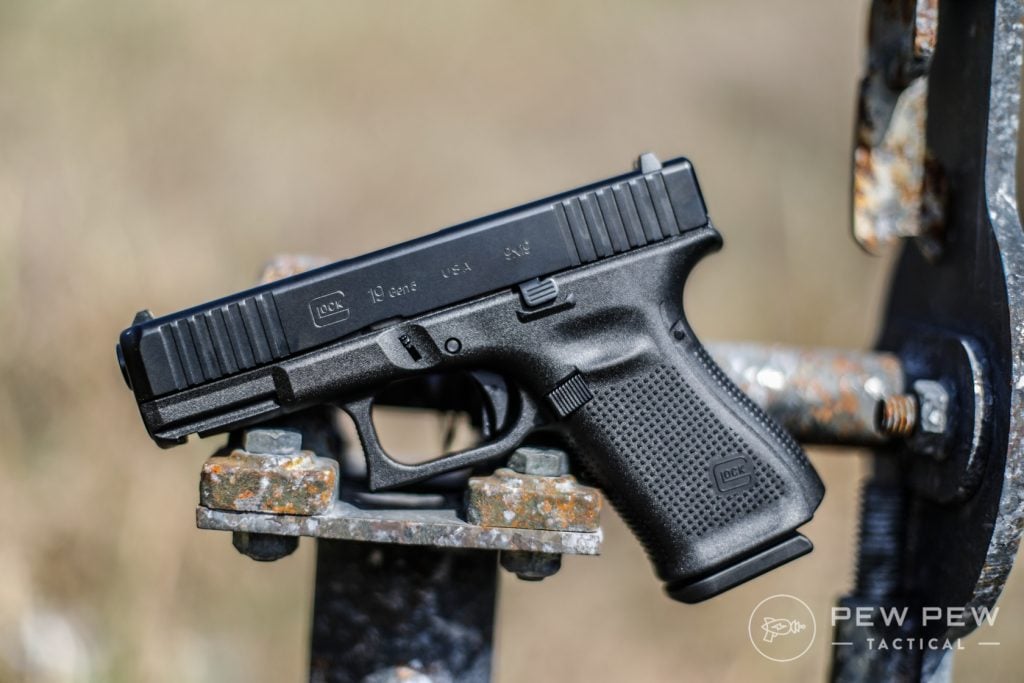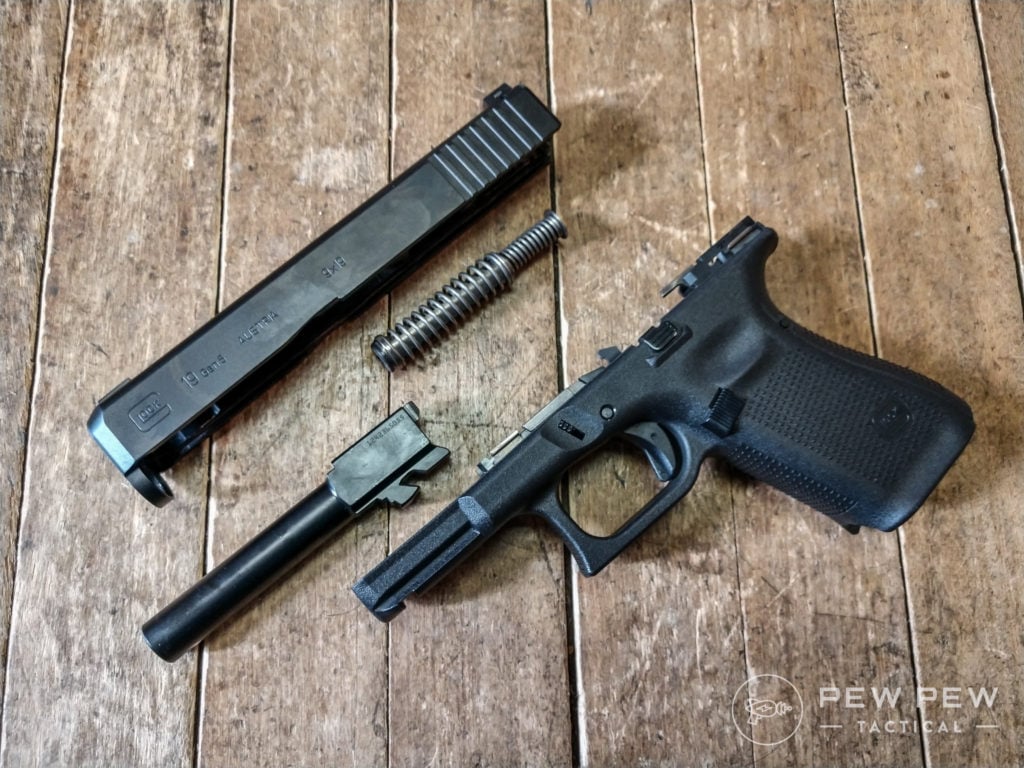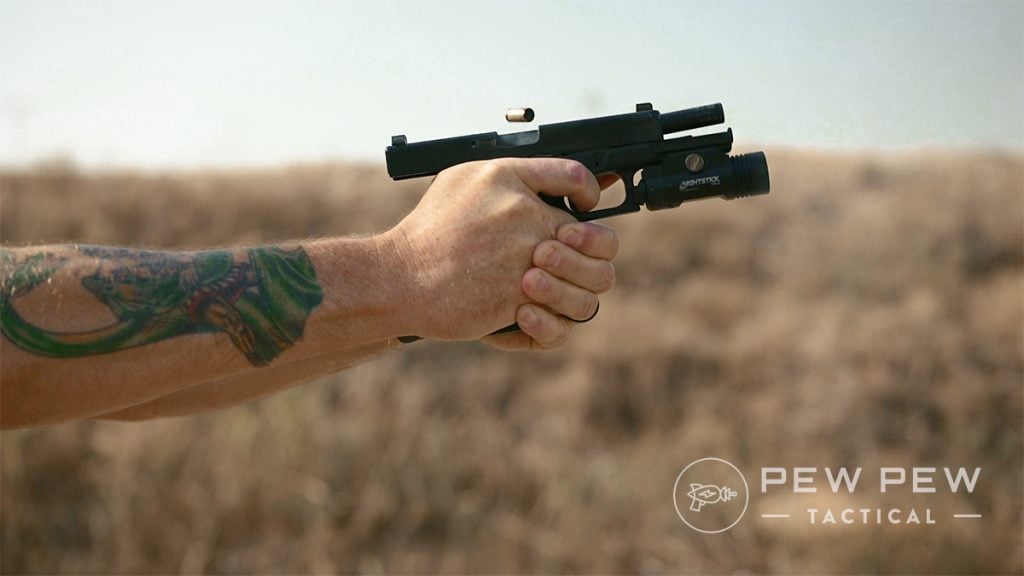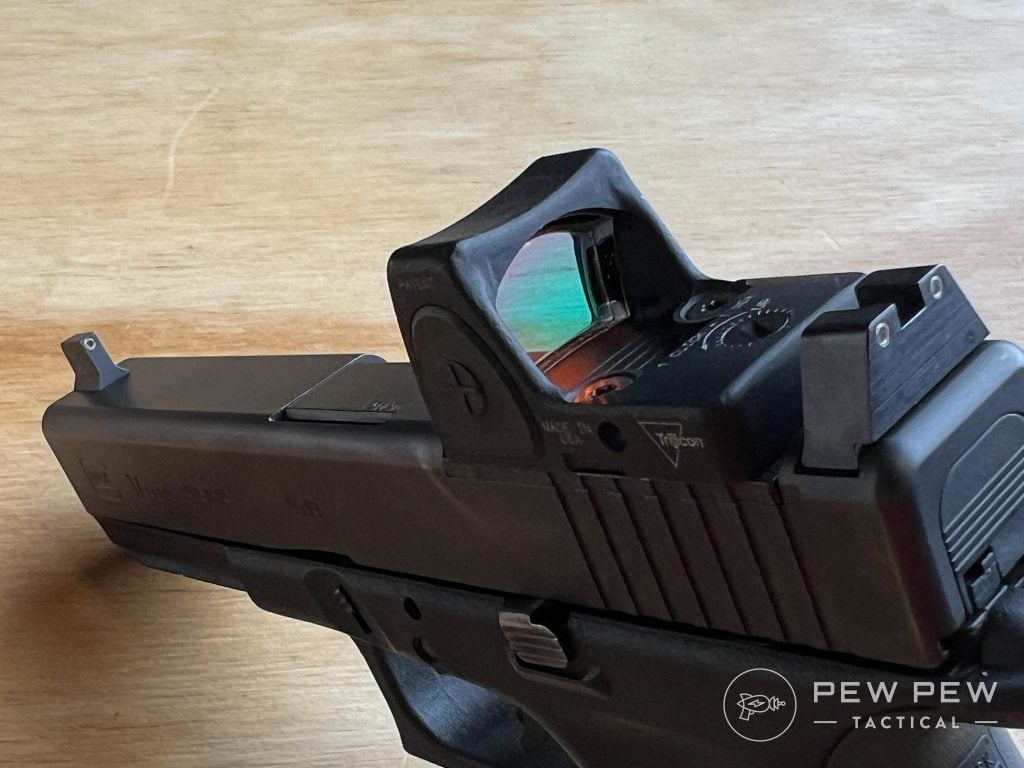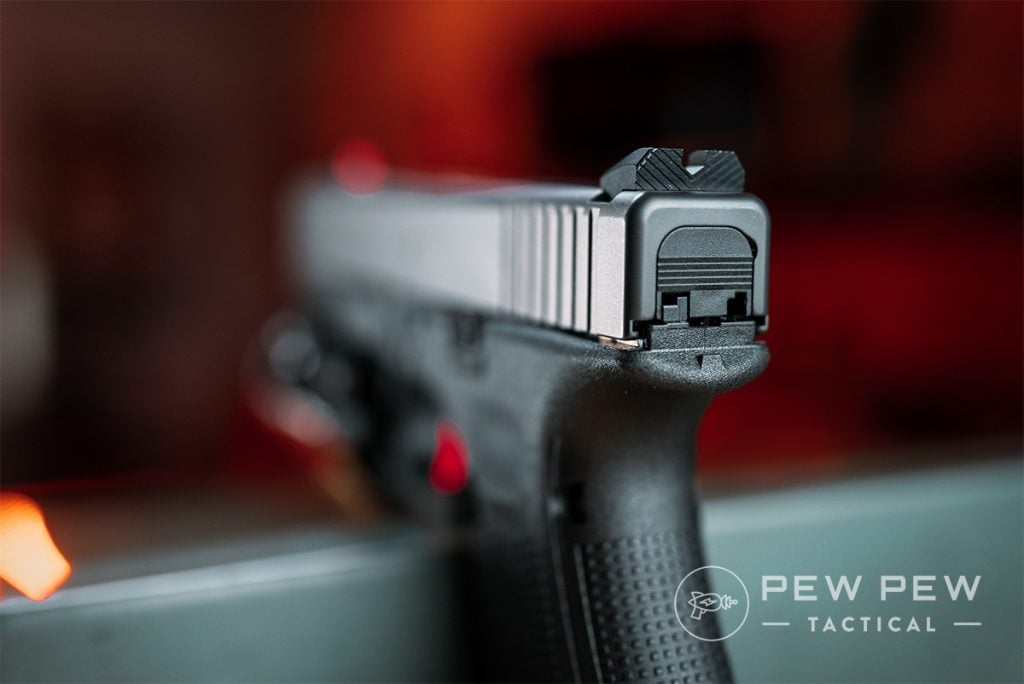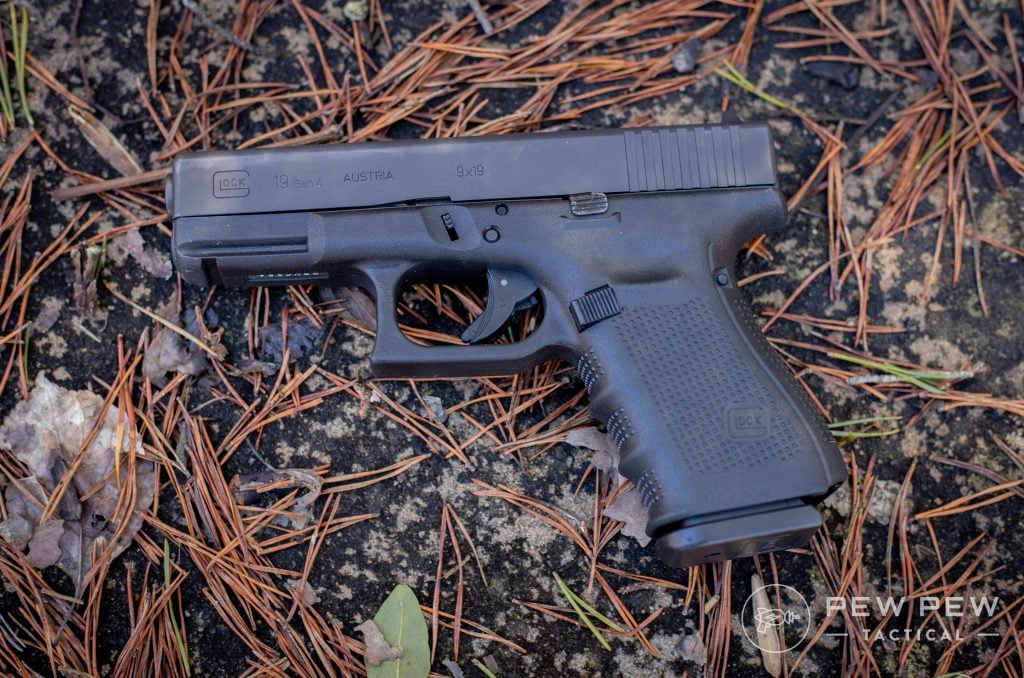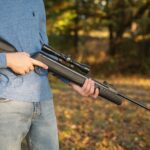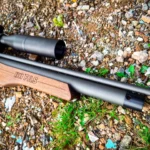Table of Contents
- What are the best 7mm PRC rifles for hunting in 2024?
- Christensen Arms Ridgeline FFT
- Mossberg Patriot Predator
- Savage 110 Apex Hunter XP
- Browning X-Bolt Speed
- Browning X-Bolt Max Long Range
- Ruger American
- Fierce Carbon Rouge
- Enjoy this article on the best 7mm PRC rifles for hunting in 2024? Please share it with your friends on Facebook and Twitter.
- NEXT: HOW 11 BEST HUNTING EAR PROTECTION OPTIONS FOR HUNTERS
- NEXT: 7mm REMINGTON MAGNUM VS 300 WIN MAG: WHAT YOU KNOW MAY BE WRONG
- NEXT: 101 BEST GIFTS FOR HUNTERS
What are the best 7mm PRC rifles for hunting in 2024?
Hornady introduced the much anticipated 7mm Precision Rifle Cartridge to the world in late 2022 and the hunting community responded with an incredible amount of enthusiasm. I don’t think it’s a stretch to say the 7mm PRC is currently one of the hottest centerfire rifle cartridges in use today and I don’t think I can recall a new cartridge that was this popular from the very start. For that reason, numerous rifle manufacturers in the United States have started to produce a wide range of 7mm PRC rifles for hunting elk, deer, pronghorn, black bear, moose, and other big game animals.
The flat shooting and hard hitting 7 mm Precision Rifle Cartridge was a massive hit among hunters and shooters in North America who appreciated the outstanding accuracy potential and the incredible power the cartridge still packs even at extended range. It also compares favorably in performance to many other popular 7 mm cartridges, like the tried and true 7 mm Rem Mag.
To that end, all 7mm PRC rifles are built with a faster twist rate (usually 1:8″) that enables them to deliver top performance with the high BC bullets best suitable for long-range shooting. Specifically, the 7mm PRC is designed to shoot heavy-for-caliber bullets (specifically 175-grain and 180-grain lead core and 160-grain monolithic .284 caliber bullets) with great accuracy.
However, not all 7mm PRC rifles are created equal and different situations require different characteristics in a rifle.
Fortunately, there’s already a wide variety of 7mm PRC rifles well suited for most big game hunting situations. So, regardless of whether you’re planning on hunting elk in Wyoming, moose in Canada, mule deer in Colorado, whitetail out east, or some other big game hunting adventure elsewhere in the world, there is pretty much guaranteed to be something for everyone on the list below of the best 7mm PRC rifles for hunting.
In this article, I share my picks for the best 7mm PRC rifles for hunting elk, deer, pronghorn, black bears, moose, and all sorts of other big game. I’ll also go over the pros and cons of each individual rifle and help you select the right one for your specific hunting situation.
Before we get started, here’s a disclaimer: some of the links below are affiliate links. This means I will earn a small commission if you make a purchase. This commission comes at no extra cost to you. This helps support the blog and allows me to continue to create free content that’s useful to hunters like yourself. Thanks for your support.
It’s also important to realize the rifle is just a single part of the equation. Even the best rifle won’t be of much use without a high quality scope and without appropriate ammunition. Plus, a rifle sling and bipod can be very useful accessories as well.
Learn more about what I consider the best scope, factory ammo, bipod, and sling options for the 7mm PRC to use on your next hunt at the links below.
Best 7mm PRC Ammo For Hunting Elk, Deer, & Other Big Game
17 Best Rifle Scopes For Hunting In 2024
Best Hunting Rifle Slings For 2024
Best Hunting Rifle Bipods For 2024
Now that we’ve got all that out of the way, let’s get started.
Christensen Arms Ridgeline FFT

I’ll cut straight to the case: I think the Christensen Arms Ridgeline FFT is the best 7mm PRC rifle available for all-around hunting use.
Christensen Arms expanded their Ridgeline FFT line to include the brand new 7mm PRC round in early 2024 and it features their signature stainless-steel carbon-wrapped barrel, a TriggerTech trigger, and a stock, floorplate, and bolt knob all made from their new FFT (Flash Forged Technology) carbon parts.
The end result is a rifle that’s very light. Specifically, the Ridgeline FFT comes from the factory weighting about 5.8 pounds. Mine weighs just a touch over 7 pounds with a Leupold VX-5HD scope, sling, and full magazine.
For reference, this rifle weighs less even when “fully loaded” than some of the other 7mm PRC rifles on this list do when they’re completely stripped down. A light rifle like that is really nice to have on a physically demanding hunt and the reduced effort necessary to carry it for long distances can help you hunt longer, hike farther, and still be ready to take the shot when the opportunity comes.
Plus, my Ridgeline FFT will consistently shoot quarter sized groups (or smaller) at the range all day long with Hornady Precision Hunter and Outfitter factory ammunition. My best groups with this rifle at 100 yards measured around .8″ with Hornady Precision Hunter ammunition shooting 175 gr ELD-X bullets.
I also think it looks really cool too.
The Ridgeline comes from the factory with a stainless steel radial muzzle brake. I found that brake to be quite effective at reducing recoil. However, it’s also removable and the Ridgeline has a standard 5/8 x 24 thread pattern for those who want to use a different muzzle brake or a suppressor, which is the route I went.
I took mine to South Africa in mid-2024 and it performed flawlessly on plains game. I carried that rifle for several dozen miles through the African bushveld over the course of a 9 day hunt without issues. It was an absolute dream to carry on a hunt and shot great.

Yes, that’s a left handed rifle in the photo above, which brings me to my next point: Christensen Arms is one of the very few manufacturers who produces left handed 7mm PRC rifles. I think the Ridgeline FFT is hands-down the best left-handed option in that chambering that’s currently available too.
All in all, I think the Christensen Arms Ridgeline FFT is the best 7mm PRC rifle you can get right now and it delivers performance approaching what you’d get with a fully custom rifle at a much more reasonable price. It’s light enough to carry on basically any hunt without undue stress, but also isn’t so light that it’s extremely difficult to shoot accurately.
It will work great for a wide range of situations ranging from deer hunting in thick terrain to to pronghorn hunting on the open prairie, to elk or mule deer hunting in the high country. The Ridgeline FFT will also fit the bill for someone who wants a lightweight rifle for a sheep or goat hunt in extremely rough terrain.
However, the Christensen Arms Ridgeline FFT Titanium is probably a better choice for someone who wants an ultra-lightweight 7mm PRC rifle. That model is basically identical to the Ridgeline FFT, but has a titanium action and is about a half pound lighter than the already feather light Ridgeline FFT.
Long story short, it’s tough to go wrong with a Christensen arms Ridgeline FFT in 7mm PRC.
- Overall Length: 42″
- Barrel Length: 22″
- Length of Pull: 13.625″
- Weight: 5lbs 13oz (Ridgeline FFT) or 5lbs 5oz (Ridgeline FFT Titanium)
- Rifling Twist Rate: 1:8″
- Threaded Barrel: Yes, Muzzle Brake included (5/8″-24 thread pattern)
- Magazine Size: 3+1
- Accuracy Guarantee: Yes (1 MOA or better)
- Left Handed Models Available: Yes
- MSRP: $2,399.99
BUY A CHRISTENSEN ARMS RIDGELINE FFT HERE
BUY A CHRISTENSEN ARMS RIDGELINE FFT TITANIUM HERE
BUY A LEFT HANDED CHRISTENSEN ARMS RIDGELINE HERE
Also Available At: Guns.com & Sportsman’s Warehouse
Mossberg Patriot Predator

Though they were originally best known for their shotguns, O.F. Mossberg and Co. has made a name for themselves in recent years for their Patriot rifles. Indeed, the Mossberg Patriot has gained a reputation as a good value hunting rifle for a variety of uses.
Well, Mossberg was one of the first companies to start producing 7mm PRC rifles when they announced the Mossberg Patriot rifle chambered in the new 7mm Precision Rifle Cartridge in early 2024.
Built on the tried and true Patriot chassis, the Patriot Predator sports an optics ready Picatinny Rail, an oversized bolt handle, a user-adjustable trigger (2-7 pounds), and a spiral fluted barrel. The barrel also has an 11-degree Match Crown and is also threaded to accept a suppressor or after market muzzle brake.
The base model Patriot Predator rifle in 7mm PRC has a blued barrel and a flat dark earth (FDE) colored synthetic stock. However, Mossberg also makes a Cerakote/Strata Camo version of the Patriot Predator rifle in 7mm PRC that otherwise identical, but has a cerakote finish on the barrel and a Strata Camo stock.
All in all, I’d say the Mossberg Patriot Predator is definitely in the running the best value 7mm PRC rifle available and is an excellent choice for someone who wants a quality 7mm PRC rifle without breaking the bank.
- Overall Length: 44.25″
- Barrel Length: 24″
- Length of Pull: 13.75″
- Weight: 6.5lbs
- Rifling Twist Rate: 1:8″
- Threaded Barrel: Yes
- Magazine Size: 3+1
- Accuracy Guarantee: No
- Left Handed Models Available: No
- MSRP: $536 or $636 (Cerakote/Strata Camo)
BUY A MOSSBERG PATRIOT PREDATOR HERE
Also Available At: Sportsman’s Warehouse
Savage 110 Apex Hunter XP

The 110 Apex Hunter XP by Savage Arms is another one of the most reasonably priced 7mm PRC rifles currently available on the market.
The Apex Hunter XP in 7mm PRC has a 2 round detachable box magazine, a black synthetic stock that may be adjusted for length of pull, a user adjustable AccuTrigger (approximately a 2.5 to 6 pound trigger pull), and comes from the factory with a Vortex Crossfire II scope mounted and boresighted on the included rail system.
Additionally, the 22-inch barrel is a good balance of long enough for good performance with the 7mm Precision Rifle Cartridge, but not so long that the rifle is unwieldy.
Realize that you will take a small hit to your muzzle velocity by going with a 22″ instead of a 24″ barrel, but the 7mm PRC actually performs surprisingly well with a 22″ (or potentially even shorter) barrel. So, that tradeoff is worth it for many hunters.
Savage also makes an identical version of the 110 Apex Hunter XP for left handed shooters, which is another great choice for someone looking for the best left handed 7mm PRC rifle.
This is not a high end custom rifle and it lacks a lot of the bells and whistles other, more expensive rifles have. However, the Savage 110 Apex Hunter XP is a very functional rifle that will work well for someone with a smaller budget who wants a good all-around 7mm PRC hunting rifle.
- Overall Length: 43″
- Barrel Length: 22″
- Length of Pull: 12.75-13.75″
- Weight: 7lbs 13oz
- Rifling Twist Rate: 1:8″
- Threaded Barrel: No
- Magazine Size: 2+1 (detachable magazine)
- Accuracy Guarantee: No
- Left Handed Models Available: Yes
- MSRP: $709
BUY A SAVAGE APEX HUNTER HERE
BUY A LEFT HANDED SAVAGE APEX HUNTER HERE
Also Available At: Sportsman’s Warehouse
Browning X-Bolt Speed

The Browning X-Bolt Speed is another great 7mm PRC rifle for hunters, especially those wanting something that’s lighter and easier to carry that’s still capable of a high degree of accuracy and precision.
In addition to all the standard features of the X-Bolt model rifles, the X-Bolt Speed has some other nice characteristics like a cerakote finish for corrosion resistance, a composite stock with an Ovix camouflage pattern, a great recoil pad, and a free floated 24” threaded barrel with a muzzle brake.
This 7mm PRC rifle also has a sporter contour barrel that’s fluted at the end to keep weight down while still being threaded for a radial muzzle brake (included) or suppressor.
It’s not quite as light as the Ridgeline FFT, but the X-Bolt Speed is also little bit less expensive. All in all, this is another one of the best lightweight 7mm PRC rifles available.
- Overall Length: 44.75″
- Barrel Length: 24″
- Length of Pull: 13.625″
- Weight: 6lbs 5oz
- Rifling Twist Rate: 1:8″
- Threaded Barrel: Yes, Muzzle Brake included (M13x0.75 thread pattern)
- Magazine Size: 3 (detachable rotary magazine)
- Accuracy Guarantee: No
- Left Handed Models Available: No
- MSRP: $1,429.99
BUY A BROWNING X-BOLT SPEED HERE
Browning X-Bolt Max Long Range

The Browning X-Bolt Max Long Range is basically the other side of the coin from the Browning X-Bolt Speed. Just as the name states, it’s a 7mm PRC rifle optimized for target shooting or long range hunting performance.
The new 7mm PRC caliber is designed to use heavier bullets with higher ballistic coefficients and this particular rifle is a good way to pair those heavy bullets with a faster muzzle velocity and a very stable shooting platform optimized for accuracy.
To that end, this rifle has a longer 26″ stainless steel, fluted heavy sporter barrel for the long range accuracy and performance. The composite Max stock has an adjustable comb for proper eye-to-scope alignment and also comes with 1/4″ and 1/2″ length of pull spacers to help the shooter adjust the stock for proper fit.
The particular model rifle pictured above uses a black and gray textured finish composite stock, but Browning also offers an identical rifle with their Ovix camouflage pattern.
The stock also has 3 separate sling swivel studs for use with a sling and/or bipod. The barrel also has a 5/8″-24 thread pattern and comes with a very aggressive Recoil Hawg muzzle brake Browning claims can reduce recoil up to 76%. For those who don’t want to use the brake, a thread protector is included and the rifle can also be used with a suppressor, which should also result is less recoil.
This rifle weighs just over 8 pounds without a scope, so it’s not exactly lightweight, but isn’t extremely heavy either. Even so, this rifle is designed more for long-range performance than for ease of carry.
With that in mind, this rifle should be a very stable shooting platform that helps the shooter wring all the performance possible out of the flat shooting and hard hitting 7mm PRC rifle cartridge and the aerodynamic bullets it uses.
That extra weight, when combined with the recoil pad and very aggressive muzzle brake, will also really help tame recoil.
This is pretty far from a good mountain hunting rifle. However, this is definitely one of the best long range 7mm PRC rifles you can buy these days. The Browning X-Bolt Max Long Range also not so large or heavy that it’s impossible to carry either.
This is an absolutely perfect 7mm PRC hunting rifle for those hunting in more open and/or gently rolling terrain where a stable shooting platform and the best long range performance are more important than a lightweight and easy to carry rifle.
Get the Browning X-Bolt Max Long Range if you want a great rifle with a long effective range and don’t mind lugging around some extra weight. Go with something else if that’s not what you’re looking for.
- Overall Length: 46.825″
- Barrel Length: 26″
- Length of Pull: 13.75″
- Weight: 8lbs 3oz
- Rifling Twist Rate: 1:8″
- Threaded Barrel: Yes, Muzzle Brake included (5/8″-24 thread pattern)
- Magazine Size: 3 (detachable rotary magazine)
- Accuracy Guarantee: No
- Left Handed Models Available: No
- MSRP: $1,479.99
BUY A BROWNING X-BOLT MAX LONG RANGE HERE
Ruger American

Ruger’s American rifle has gained a reputation for being one of the most reasonably priced centerfire hunting rifles around today. These are great guns hunters all over the world have used the Ruger American to take almost any species of big game you can think of, to include the biggest game in North America.
Well, Ruger has fortunately added the 7mm PRC to their Ruger American lineup, which is another great value 7mm PRC hunting rifle that’s also functional and well built.
This rifle does not have a lot of bells and whistles or cool design features. However, it’s a very serviceable, practical, and reasonably priced 7mm PRC rifle for many hunters.
The Ruger American does not come with an accuracy guarantee and you likely won’t be winning any shooting competitions with it. However, every single one of these rifles I’ve used over the years has shot surprisingly well.
This particular version of the American rifle has a cerakote finish on the barrel and a synthetic stock with a “GO Wild® Camo I-M Brush” color. It also has a threaded barrel (5/8″-24) and comes with a removable muzzle brake that may be replaced with a thread protector (sold separately) or suppressor.
All things considered, the Ruger American is an outstanding 7mm PRC rifle for hunting a variety of big game, but is an especially good choice for someone who wanted to use primarily for hunting whitetail deer and feral hogs who wanted a rifle they could also use on an elk or moose hunt in the future.
- Overall Length: 44″
- Barrel Length: 24″
- Length of Pull: 13.75″
- Weight: 7.1lbs
- Rifling Twist Rate: 1:8″
- Threaded Barrel: Yes (5/8″-24 thread pattern)
- Magazine Size: 3
- Accuracy Guarantee: No
- Left Handed Models Available: No
- MSRP: $789
BUY A RUGER AMERICAN HERE
Also Available At: Cabela’s, Guns.com, and Sportsman’s Warehouse
Fierce Carbon Rouge

Fierce Firearms is a smaller and newer rifle maker based out of Redmond, Utah. Instead of focusing on budget rifles, Fierce Firearms produces a lot of higher end models that utilize carbon fiber and other modern and innovate features.
Well, Fierce immediately started producing 7 mm PRC rifles right after Hornady introduced the cartridge and the Carbon Rouge is one of their offerings in that chambering. The Carbon Rouge has a both a carbon stock and a carbon-wrapped barrel. You have the option of selecting either a 22-inch or a 24-inch barrel with the Carbon Rouge.
It also has an innovative integral bipod rail and QD flush cups.
As you can imagine, this rifle is light. This rifle also comes with an astounding .75-MOA accuracy guarantee. When combined with the overall lightweight, modern design of the Carbon Rouge, this definitely looks like a great rifle for those who want a lightweight rifle with plenty of reach.
All in all, the Fierce Carbon Rouge is an outstanding 7mm PRC hunting rifle for someone who wants high end performance without shelling out the cash necessary to purchase a completely custom rifle.
- Overall Length: 42-44″
- Barrel Length: 22″ or 24″
- Weight: 5.8lbs
- Rifling Twist Rate: 1:8″
- Threaded Barrel: Yes (5/8″-24), radial muzzle brake included
- Magazine Size: 3
- Accuracy Guarantee: Yes (.75 MOA at 100 yards)
- Left Handed Models Available: No
- MSRP: $2,199.99
BUY A FIERCE CARBON ROUGE HERE
Also Available At: Guns.com
It’s also important to realize the rifle is just a single part of the equation. Even the best rifle won’t be of much use without a high quality scope and without appropriate ammunition. Plus, a rifle sling and bipod can be very useful accessories as well.
Learn more about what I consider the best scope, factory ammo, bipod, and sling options for the 7mm PRC to use on your next hunt at the links below.
Best 7mm PRC Ammo For Hunting Elk, Deer, & Other Big Game
17 Best Rifle Scopes For Hunting In 2024
Best Hunting Rifle Slings For 2024
Best Hunting Rifle Bipods For 2024
Make sure you follow The Big Game Hunting Blog on Facebook, Instagram, Twitter, and YouTube.








![Air gun 101: The differences between .177 & .22 – Which jobs they do best ? [Infographic]](https://airgunmaniac.b-cdn.net/wp-content/uploads/2024/11/1773-218x150.jpeg)



































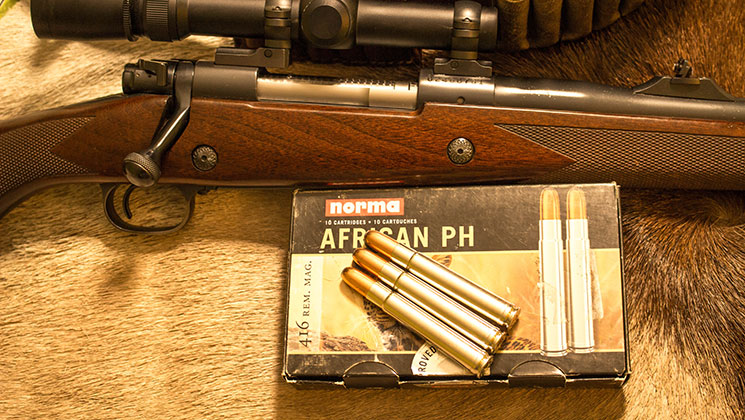

 Arizona isn’t the only state to prove once predator control is put into place, mule deer rebound. From 2004 to 2012, Nevada recently conducted a study proving the same. In 2004, the Nevada Department Of Wildlife (NDOW), with the approval from the Nevada Board of Wildlife Commissioners, initiated Project 18 as part of NDOW’s Predation Management Plan. The goal of the project was simple, keep more deer on the mountain and increase hunting opportunities for Nevada sportsmen. Since NDOW does not do predator control, the USDA’s Wildlife Services Program in Nevada was asked to implement the project. One full-time wildlife specialist was hired to remove all coyotes and all mountain lions deemed a threat to mule deer within hunt unit 014 of Nevada. The results were astonishing.
Arizona isn’t the only state to prove once predator control is put into place, mule deer rebound. From 2004 to 2012, Nevada recently conducted a study proving the same. In 2004, the Nevada Department Of Wildlife (NDOW), with the approval from the Nevada Board of Wildlife Commissioners, initiated Project 18 as part of NDOW’s Predation Management Plan. The goal of the project was simple, keep more deer on the mountain and increase hunting opportunities for Nevada sportsmen. Since NDOW does not do predator control, the USDA’s Wildlife Services Program in Nevada was asked to implement the project. One full-time wildlife specialist was hired to remove all coyotes and all mountain lions deemed a threat to mule deer within hunt unit 014 of Nevada. The results were astonishing. Furthermore, the break-down for the deer kills was comprised of the following: 50 percent were adults, 19 percent were yearlings, and 31 percent were young-of-the-year. Broken down by sex, 52 percent were bucks and 48 percent were does. While this study does not single out mountain lions for the annual death toll on mule deer, it does shed light to the fact that deer are a staple diet for mountain lions.
Furthermore, the break-down for the deer kills was comprised of the following: 50 percent were adults, 19 percent were yearlings, and 31 percent were young-of-the-year. Broken down by sex, 52 percent were bucks and 48 percent were does. While this study does not single out mountain lions for the annual death toll on mule deer, it does shed light to the fact that deer are a staple diet for mountain lions. Personally, I have long been a fan of predator hunting. There’s nothing as fun during the winter months than to go out and call in coyotes and bobcats. And while this can be effective and alleviate some pressure on wintering deer, this is not the only time of the year when we should be out putting the hurt on predators. In fact, the late spring and early summer months are more crucial to give the newborn fawns a fighting chance at life.
Personally, I have long been a fan of predator hunting. There’s nothing as fun during the winter months than to go out and call in coyotes and bobcats. And while this can be effective and alleviate some pressure on wintering deer, this is not the only time of the year when we should be out putting the hurt on predators. In fact, the late spring and early summer months are more crucial to give the newborn fawns a fighting chance at life.




